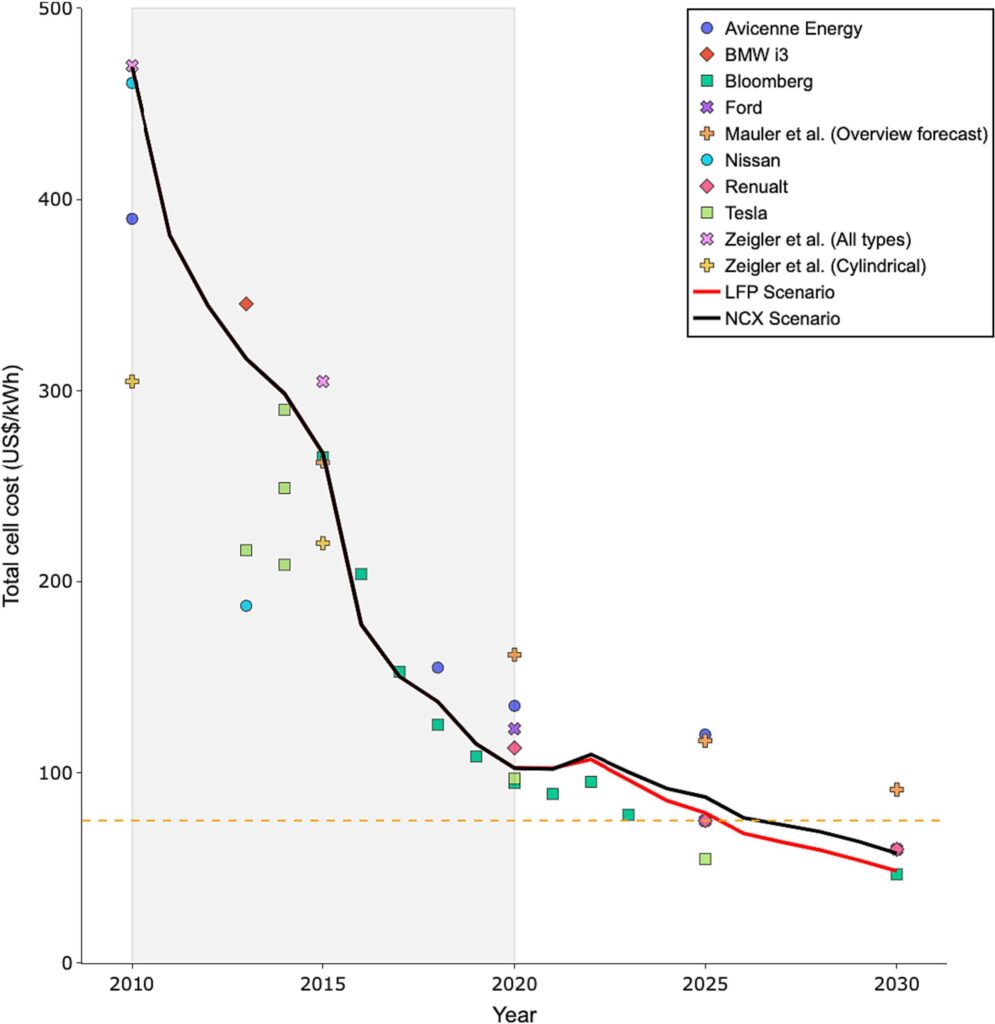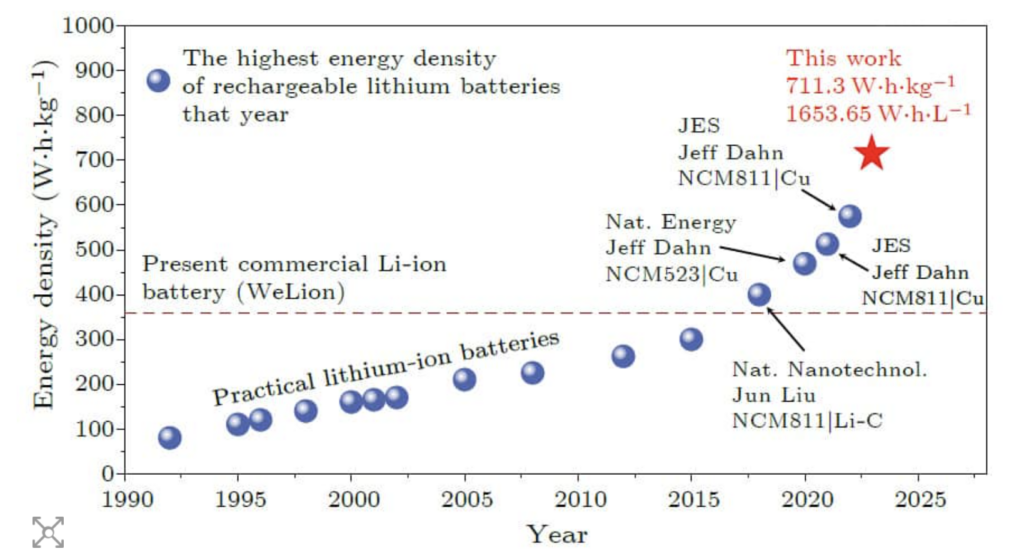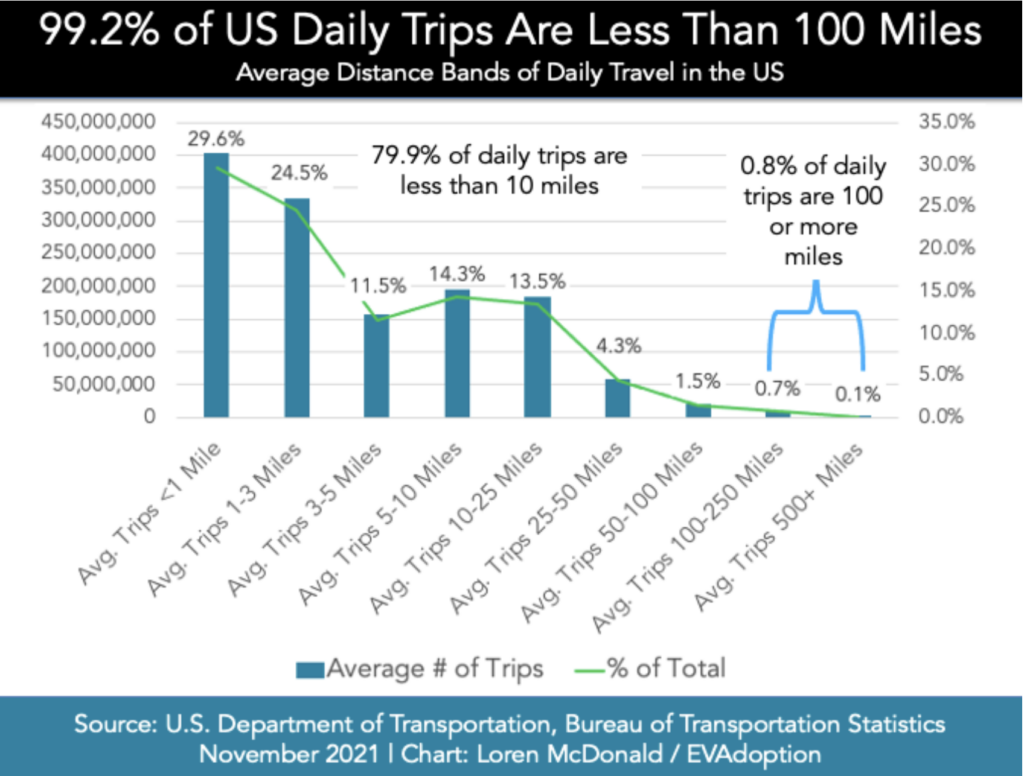By Mark Sandeen
Let’s take a look at the trends and forecasts for lithium-ion batteries.
There are a number of trends that are relevant. Cost first, followed by weight (aka energy density measured in Wh/kg), followed by size (aka volumetric energy density measured in Wh/liter).
Are batteries becoming cheaper, lighter, and smaller? The answer is an emphatic yes.
The trends for all three metrics are expected to continue to improve through 2040.
Lithium Ion batteries cost curve follows Wright’s Law. For each doubling of production volume, the cost of manufacturing lithium-ion batteries decreases by 18%. Lithium-ion battery production tripled in the last three years from 550 GWh in 2022 to 1,545 GWh in 2024. Prices are coming down rapidly as a result. The cost of lithium ion batteries decreased 31% from 2022 to 2024.

When costs decline, demand increases, driving higher production volumes and lower costs once again. Rinse and repeat.
A research paper “Historical and prospective lithium-ion battery cost trajectories from a bottom-up production modeling perspective” projects cost decreases of about another 50% by 2030.

Now let’s take a look at weight. This Physics World article shows lithium ion energy density improvements actually accelerating.
Today’s electric vehicles use batteries with an energy density of 200 to 300 Wh/kg. There is a lot of potential for improvement. The theoretical limit for lithium ion batteries is about 1,250 Wh/kg.

Now lets take a look at size. The Department of Energy reports that the volumetric energy density of lithium-ion batteries has Increased by more than eight times between 2008 and 2020, from 55 Wh/liter to 450 Wh/liter.

A paper in the South African Journal of Chemical Engineering reports lithium-ion batteries with volumetric energy density of 693 Wh/liter in 2024.
If batteries are getting dramatically cheaper, lighter, and smaller, why are car manufacturers leveling off near 300 miles of range for electric vehicles? Perhaps the primary reason is 300 miles of range has proven more than adequate.
According to US Department of Transportation 99% of all trips are less than 100 miles and 99.9% of all trips are less than 250 miles.

But perhaps the main reason is that customers aren’t demanding more range.
There just aren’t that many people who have a strong desire to drive more than 5 hours in a row without a break.
And 300 miles or range is more than enough for someone driving 12,000 miles a year or 33 miles a day on average.
A car with 300 miles of range would only need to charge less than once a week to cover that distance.
